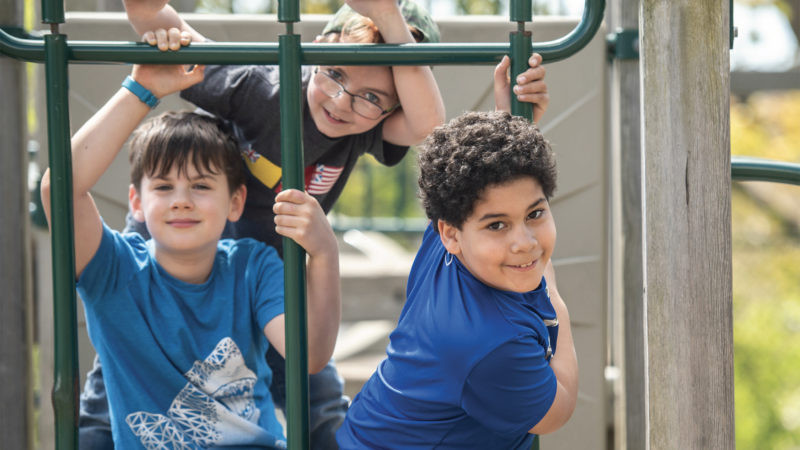5 Social-Emotional Skills Kids Need to Master in Middle School
By Kate Corbett LCSW (school counselor)
The halls of middle schools are filled with students experiencing a period of intellectual, physical, and social-emotional change that is rivaled only during infancy. For years, schools have treated “middle school drama” as something to be contained and overcome in order for any learning to take place. But many schools have come to recognize that unless they explore ways to help students navigate the social and emotional aspects of this period, learning will inevitably take a back seat to emotions.
Below are five social-emotional skills kids need to master in middle school—and the reasons why they’re so important for student accomplishment.
1. The Benefits of Teaching Social-Emotional Skills
For adolescents to stay grounded and thrive in the face of rapid physical changes, they need to develop a variety of social-emotional competencies. Social-emotional competencies are the attitudes, behaviors, and skills needed to create positive relationships and successfully manage life’s challenges. These are the character traits that allow young people to feel empathy, make ethical decisions, and take responsibility for their actions.
They also help them learn. Research demonstrates that gaining these competencies has a significant positive impact on adolescents in school and beyond, including:
- An increase in academic achievement
- An increased ability to manage emotional stress
- An increase in positive relationships
- An improved positive attitude toward self and others
2. 5 Core Competencies
The Collaborative for Social-Emotional Learning identifies five core social-emotional competencies:
Self-awareness
- Having a sense of confidence and a positive mindset
- Identifying personal strengths, limitations, and values
- Understanding how thoughts and feelings impact behavior
Self-management
- Regulating emotions, thoughts, behaviors, and impulses
- Understanding how to set goals and work toward them
- Managing personal and interpersonal stress
Responsible decision making
- Identifying, analyzing, and solving problems
- Engaging in self-reflection
- Evaluating consequences of decisions
- Making decisions based on ethical, moral, and personal values
Relationship skills
- Creating healthy and rewarding relationships
- Communicating and listening
- Negotiating conflict confidently and constructively
- Resisting inappropriate social pressure
Social awareness
- Expressing empathy and taking the perspective of others
- Understanding social norms for behavior
- Appreciating diversity
- Demonstrating respect for others
3. Does Social-Emotional Learning Belong in School?
Early adolescence is a time of rapid physical changes and intense emotions. At Waynflete, small groups of students meet each week in a sixth-grade seminar, where they focus on such issues as how the brain affects emotions. They practice active listening, managing their emotions, and how to cultivate empathy through curiosity about each other.
This kind of curriculum can change the way students experience the first years of adolescence—and how well they learn. Students who come to middle school with a positive mindset and an ability to manage intense emotions are better prepared to successfully work through a disappointment or a complex social situation.
4. Bringing Social-Emotional Learning into the Classroom
Middle school students’ learning is enhanced when teachers embed social-emotional learning opportunities in the academic curriculum. Giving students the chance to collaborate in small groups, respond to each other as well as the teacher, and consider questions and problems that have multiple right answers creates opportunities for students to practice the five core competencies.
At Waynflete, we are committed to supporting students’ emotional, social, and academic development. Cooperative learning opportunities, group discussions, and time for self-reflection expand students’ thinking beyond themselves. Giving students a message that education is important, and their success is a priority, creates a culture where persistence and curiosity are valued.
5. The Importance of School Culture
Schools that provide a safe and supportive environment—with adults who model positive relationships—create a school culture where relationships matter. When teachers treat students with care and warmth, and provide opportunities for them to make choices and take on increasing levels of responsibility, students gain confidence and are more apt to take on challenges.
Waynflete offers many opportunities for students to practice responsibility and independence. For example, the favorite part of every middle schooler’s day is their free period where, with adult guidance, they can choose whether to do their homework, meet with a teacher, play basketball, or spend time with their friends. In general, we find that if you treat students with trust and respect, they learn to trust and respect their school, their teachers, their peers, and themselves.
Many schools have come to realize the power of incorporating social-emotional learning in their curriculum, teacher-student relationships, and school culture. Adolescents who are able to communicate well, demonstrate persistence, and relate to others with both empathy and respect are positioned for long-term success as young adults in college and the workforce.



